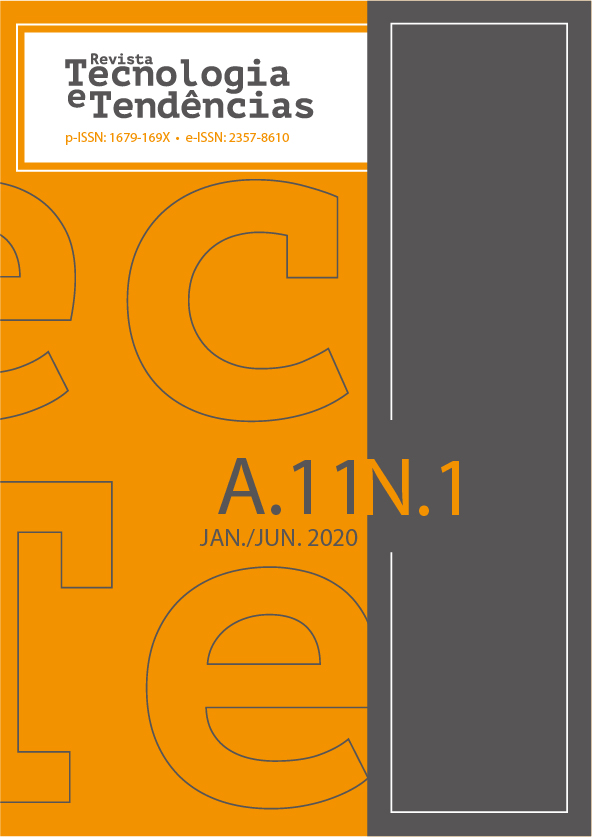RECICLAGEM DE GESSO DE DEMOLIÇÃO E INFLUÊNCIA DA ADIÇÃO DE RETARDADORES DE CURA NAS PROPRIEDADES MECÂNICAS
DOI:
https://doi.org/10.25112/rtt.v11i1.2295Resumo
Resumo
O gesso é um material de construção amplamente utilizado devido à sua leveza e baixo custo, mas se torna um passivo ambiental, pois os resíduos gerados na construção e demolição de edifícios são descartados incorretamente e podem causar grandes danos ao solo e às águas subterrâneas. Sua reciclagem tem sido extensivamente estudada, mas fatores ambientais e de gerenciamento no descarte foram desconsiderados. O descarte desse material, mesmo quando controlado por políticas públicas, tem sido negligenciado, levando à contaminação desse material, conforme observado pela análise qualitativa da difração de raios X. Esses contaminantes atuam durante o processo de nucleação e crescimento de cristais de gesso, alterando o tamanho e sua forma. Este estudo avalia as propriedades físicas e mecânicas da reciclagem de resíduos de gesso obtidos em recicladores credenciados por órgãos públicos em estado puro e com a inserção de álcool polivinílico e ácido cítrico como retardadores do tempo de preparação comparando os resultados obtidos com o gesso comercial. Os resultados indicam que, nos casos de adição de álcool polivinílico, há ganho nas propriedades mecânicas quando comparado ao produto comercial e melhor trabalhabilidade quando comparado ao gesso reciclado puro, enquanto com a adição de ácido cítrico, essas propriedades são reduzidas nas duas comparações.
Palavras-chave: Reciclagem. PVAl. Ácido Cítrico. Gesso.
ABSTRACT
Gypsum is a widely used construction material due to its lightness and low cost, but it becomes an environmental liability as the waste generated in the construction and demolition of buildings is improperly disposed of and can cause great damage to the soil and groundwater. Its recyclability has been extensively studied, but environmental and management factors in the disposal have been disregarded. The disposal of this material, even when controlled by public policies, has been neglected, leading to the contamination of this material, as observed by the X-ray diffraction qualitative analysis. These contaminants act during the process of nucleation and growth of gypsum crystals, altering size and their form. This study evaluates the physical and mechanical properties of the recycling of gypsum waste obtained in recyclers accredited by public agencies in the pure state and with the insertion of polyvinyl alcohol and citric acid as retarders of setting-time comparing the obtained results with commercial gypsum. The results indicate that in the cases of addition of polyvinyl alcohol there is gain in the mechanical properties when compared to the commercial product and better workability when compared to pure recycled gypsum. While with the addition of citric acid these properties are reduced in both comparisons.
Keywords: Recycling. PVAl. Citric Acid. Plaster.
Arquivos adicionais
Publicado
Edição
Seção
Licença
• Os autores mantêm os direitos autorais e concedem à revista o direito de primeira publicação com o trabalho licenciado sob a Licença Creative Commons - Attribution 4.0 International (CC BY 4.0).
• Os autores são estimulados a publicar e distribuir seu trabalho online (ex.: em repositórios institucionais ou na sua página pessoal), pois isso pode aumentar o impacto e a citação do trabalho publicado.
--------------------------------------------------------------------------------------------------------------------------------
• The authors retain the copyright and grant the magazine the right of first publication with the work licensed under the Licença Creative Commons - Attribution 4.0 International (CC BY 4.0).
• Authors are encouraged to publish and distribute their work online (eg in institutional repositories or on their personal page), as this may increase the impact and citation of the published work.

